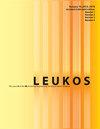使用虚拟现实技术感知欧洲白天场景的地区差异。第二部分:立面和日光图案几何的效果
IF 2.6
2区 工程技术
Q2 CONSTRUCTION & BUILDING TECHNOLOGY
引用次数: 5
摘要
虽然在世界各地和整个欧洲的当代建筑中越来越多地使用复杂的立面设计,但人们对这些立面的感知影响以及由此产生的日光模式对居住者的影响知之甚少,也不知道这种影响在欧洲纬度之间有什么不同。本研究通过复制挪威、瑞士和希腊的虚拟现实(VR)实验,采用混合实验设计,共同研究不同因素对采光室内空间感知的影响,考察了欧洲各地对光线和日光模式的感知。这些因素包括:景观几何(四种相同孔径比的当代景观设计的主题内因素)、天空类型(晴朗的天空或高或低的太阳角度,或阴天)、空间背景(社交或工作)和国家(挪威、瑞士或希腊)。结果表明,在被操纵的因素中,只有立面几何形状影响了所研究的属性(空间的愉悦、有趣、刺激、平静、复杂、宽敞、明亮程度,以及对空间内视野的满意度)。仅在报告的亮度上观察到区域效应,希腊参与者的评价高于挪威,但由于使用VR和在两国不同季节(夏季和初秋)进行实验的限制,很难进行概括。这些研究结果表明,亮度设计是我们空间体验的一个重要特征,在整个欧洲都能引起同等的感知效应,如愉悦感或兴趣的变化,并激发了对亮度感知的进一步研究。本文章由计算机程序翻译,如有差异,请以英文原文为准。
Regional Differences in the Perception of Daylit Scenes across Europe Using Virtual Reality. Part II: Effects of Façade and Daylight Pattern Geometry
ABSTRACT While there is a growing use of complex façade designs in contemporary architecture worldwide and across Europe, little is known about the perceptual effects of these façades and the resulting daylight patterns on occupants, or about how such effects might differ between European latitudes. This study examines the perception of façade and daylight patterns across Europe by replicating a virtual reality (VR) experiment in Norway, Switzerland and Greece, using a mixed experimental design to jointly investigate the influence of different factors on the perception of a daylit interior space. These factors included: façade geometry (within-subject factor with four contemporary façade designs of equal aperture ratio), sky type (clear sky with high or low sun angle, or overcast sky), spatial context (socializing or working), and country (Norway, Switzerland, or Greece). Results showed that, among the manipulated factors, only the façade geometry affected the studied attributes (how pleasant, interesting, exciting, calming, complex, spacious, and bright the space was perceived, and the satisfaction with the amount of view in the space). Regional effects were observed only for reported brightness, with higher evaluations from participants in Greece than in Norway, but are difficult to generalize due to limitations stemming from the use of VR and the conduction of experiments in different seasons (summer and early fall) in the two countries. These findings show that façade design is a crucial feature in our spatial experience, inducing equivalent perceptual effects, such as changes in pleasantness or interest, across Europe, and motivate further research on the perception of brightness.
求助全文
通过发布文献求助,成功后即可免费获取论文全文。
去求助
来源期刊

Leukos
工程技术-光学
CiteScore
7.60
自引率
5.60%
发文量
19
审稿时长
>12 weeks
期刊介绍:
The Illuminating Engineering Society of North America and our publisher Taylor & Francis make every effort to ensure the accuracy of all the information (the "Content") contained in our publications. However, The Illuminating Engineering Society of North America and our publisher Taylor & Francis, our agents, and our licensors make no representations or warranties whatsoever as to the accuracy, completeness, or suitability for any purpose of the Content. Any opinions and views expressed in this publication are the opinions and views of the authors, and are not the views of or endorsed by The Illuminating Engineering Society of North America and our publisher Taylor & Francis. The accuracy of the Content should not be relied upon and should be independently verified with primary sources of information. The Illuminating Engineering Society of North America and our publisher Taylor & Francis shall not be liable for any losses, actions, claims, proceedings, demands, costs, expenses, damages, and other liabilities whatsoever or howsoever caused arising directly or indirectly in connection with, in relation to, or arising out of the use of the Content. Terms & Conditions of access and use can be found at http://www.tandfonline.com/page/terms-and-conditions .
 求助内容:
求助内容: 应助结果提醒方式:
应助结果提醒方式:


